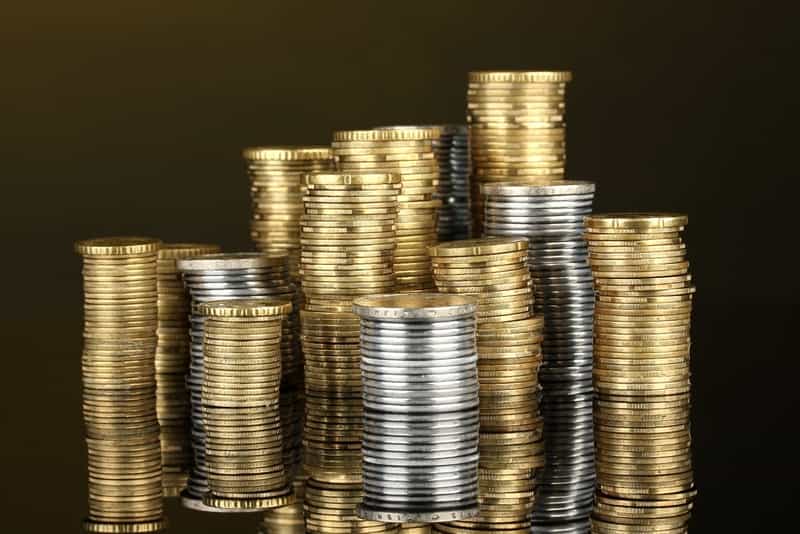As we are moving closer to the end of the COVID-19 pandemic, many investors are struggling to find a way to prepare themselves for similar uncertainties in the future.
Since the stock market is a battlefield, some individuals opt for gold and silver investments. Nevertheless, most of them wonder which investment is expected to yield better gains. The only way to solve this dilemma is by examining the uses, technical features, and economic sensitivities of both metals.
When making a comparison, would-be investors should consider five factors that indicate their differences, including safety, growth, cost, price fluctuations, and storage.
You will find each difference explained in detail.
Safety
The inceptive difference between gold and silver investments is in terms of safety. Even though both assets are generally considered safe, the levels of risk are different. The former is regarded as a more stable asset, as the silver market has a tendency to experience higher volatility levels. Volatility measures the speed at which gains and losses occur. Consequently, more volatile assets experience faster gains and losses in comparison to less volatile commodities.
Moreover, gold is considered a safer option because of the remarkable store of value. Prices move upwards and downwards at a slower rate, which contributes to greater safety. The volatility of silver is two to three times higher than that of gold, meaning it makes portfolio risk less manageable. Check out this beginner’s guide to silver and the role it plays in portfolios.
Growth
Another point of comparison between these precious metal investments is growth. Growth is directly related to the safety of assets. Safer assets have a relatively slow growth compared to riskier commodities, whose growth rate is higher. If your investing goal is just focused on growth, silver would be the wiser choice.
Silver is nowadays tremendously undervalued, which makes its potential for growth much better than that of gold. By looking at historical data, silver is bound to make a comeback. Nevertheless, past performance isn’t always the best indicator of future performance. Despite the greater potential of this asset to climb in price, growth isn’t fully guaranteed.
In contrast, the stability of gold as an investment makes the growth of this asset slow. In some instances, it has surpassed the growth of silver. Anyhow, in most cases, its slow-moving price nature leads to lower profitability. Investors who don’t mind risking should undoubtedly opt for the latter as an investment opportunity.
Cost
Another important point of comparison when comparing gold and silver investments is their cost. Affordability is incredibly important when building a portfolio. In order for an investor’s portfolio to be diversified, it should have small asset portions tied up in both metals. If you decide to allocate ten percent of your funds to these investments, you will be surprised by the amount of metal you will get for the same price.
Silver is much more affordable, as it only costs $21 per ounce. Its low price makes it more accessible as a commodity. For instance, a ten-ounce silver bar costs about $210. Hence, these investments are more popular among young investors who don’t have thousands to invest in commodities. See this URL, https://www.wikihow.com/Buy-Silver, to discover five ways to buy silver.
Gold is much pricier, as it costs over $1780 per ounce. You will certainly need a meaningful sum of money to make an initial investment. Let’s assume you have determined to invest $1,000 in these precious metals. This sum won’t help you purchase not even an ounce of gold, let alone a bar. Conversely, you’ll be able to buy at least four ten-ounce bars.
Price fluctuations
Another essential factor to consider when making a difference between gold and silver investments is the causes of price fluctuations. Investors should educate themselves on the factors that make an asset’s price fluctuate. There are a few catalysts capable of moving silver prices up and down, including market conditions, economic conditions, and industrial demand.
Despite the volatility of this asset, investors still consider it safer than other equities. Therefore, poor market conditions send silver prices up, which isn’t the case when market conditions are positive. The same applies when economic conditions are unfavorable. Prior to investing, spare some time to look at economic reports and GDP reports.
As far as demand is concerned, this versatile metal is used in much more than silverware and jewelry. In fact, industrial demand is significant. The absence of electrical resistance in this metal makes it a critical component in solar panels. Additionally, it’s commonly used in fuses, switches, contact lenses, etc. When these products become more demanded, the metal’s price increases too.
Conversely, gold’s value is led by several important catalysts. When considering investing in gold vs silver, investors should analyze all factors. Market and economic conditions affect gold’s value by increasing it when the conditions are poor. Cultural events are another vital catalyst, as gold is popular in many cultures worldwide for its use in architecture, art, and weddings.
For instance, there are two rounds of weddings in India. The first round takes place between October and December, whereas the second round occurs between January and March. During these periods, the global demand for gold experiences a noticeable increase.
The inflation rate is another catalyst, as it boosts the asset’s price. This commodity holds its value, while cash is deprived of its buying power. In the case of unsettling geopolitical factors, there are price gains as well.
Storage space
The ultimate point of comparison between gold and silver investments is the storage space. The latter requires much more space for storage because of the affordability advantage. For example, investors can hold $40,000 of worth in gold in just one hand. Conversely, they will need approximately ten shoe boxes to store the same worth of silver. Hence, most depositories charge higher fees for professional storage.
In conclusion
Both precious metals are fantastic investment options.
Poor market conditions and economic uncertainly only work in their favor!


